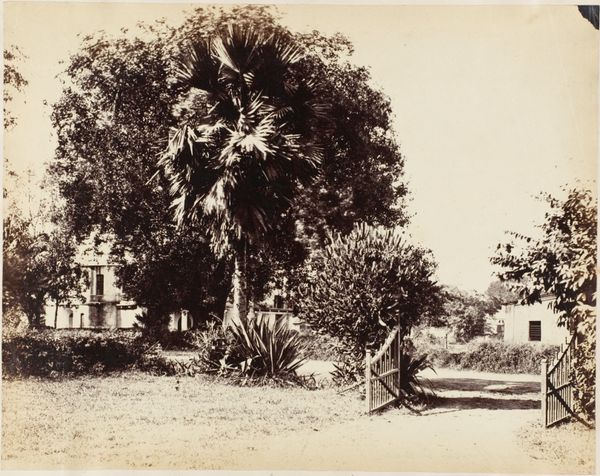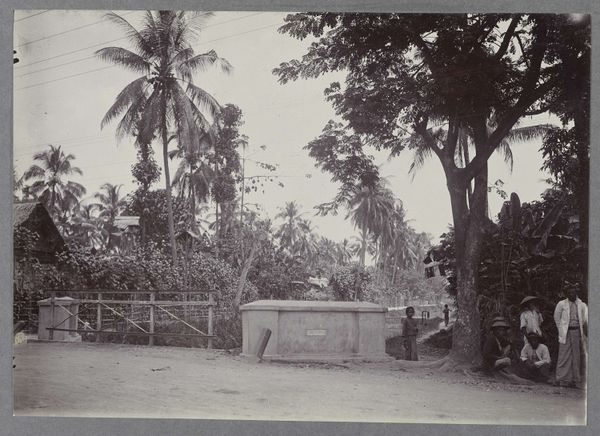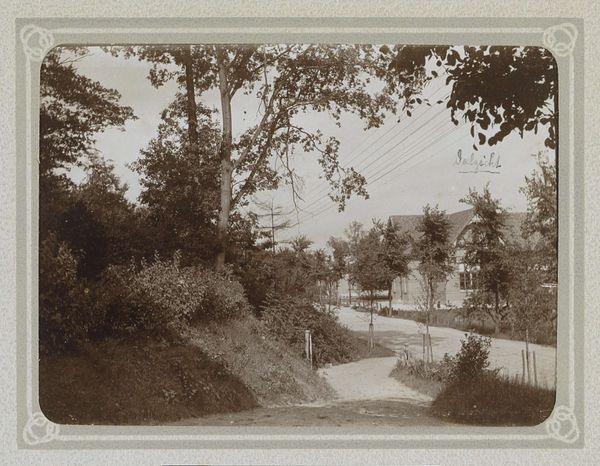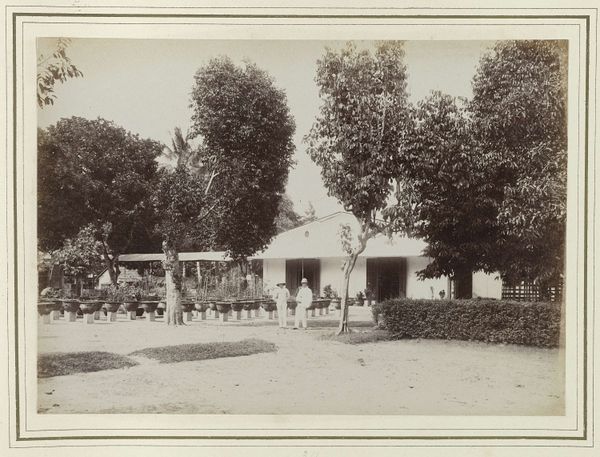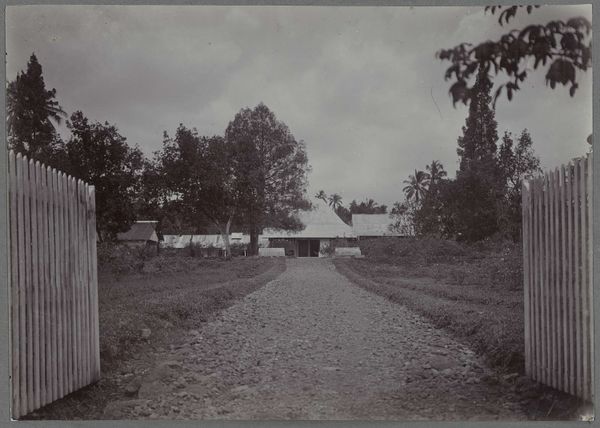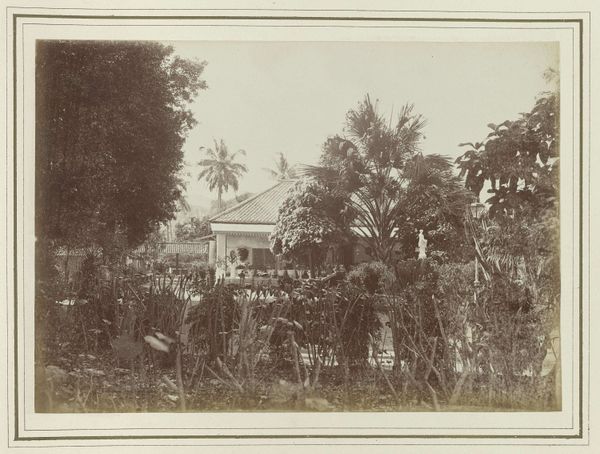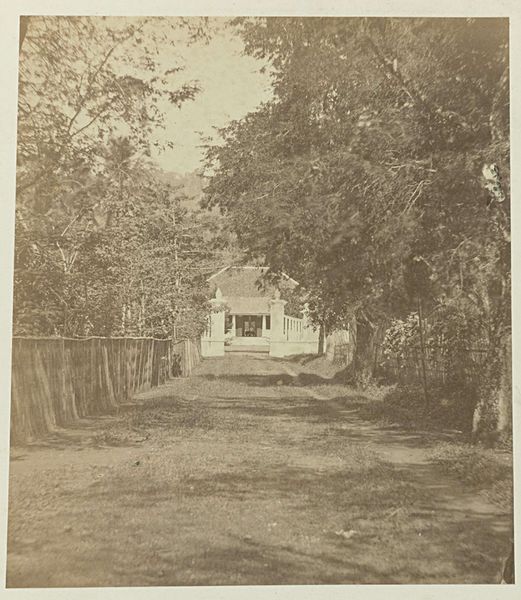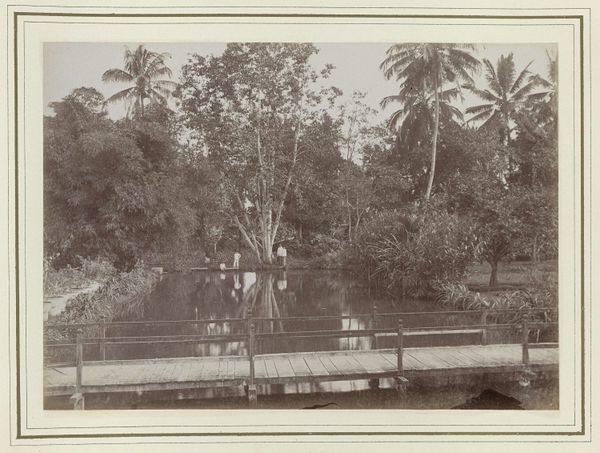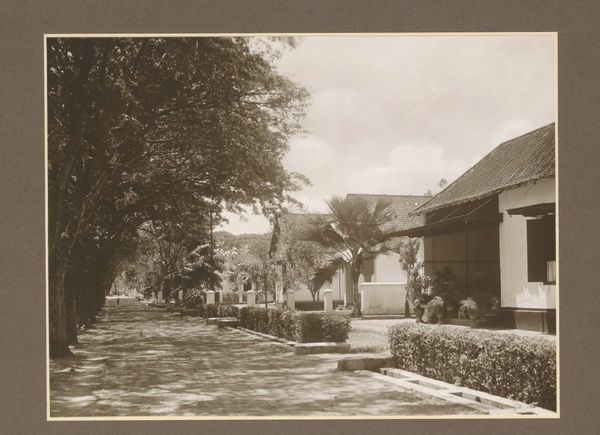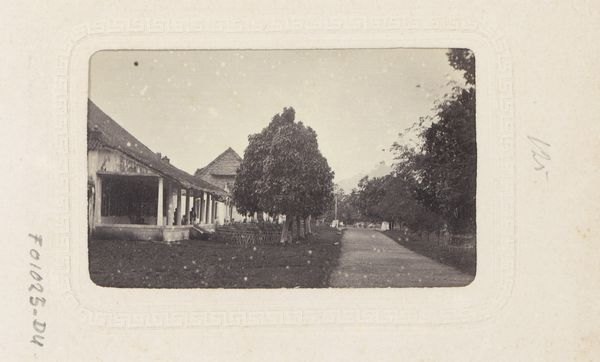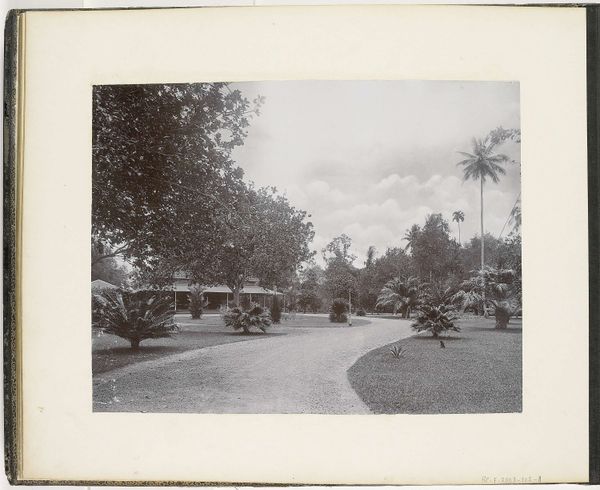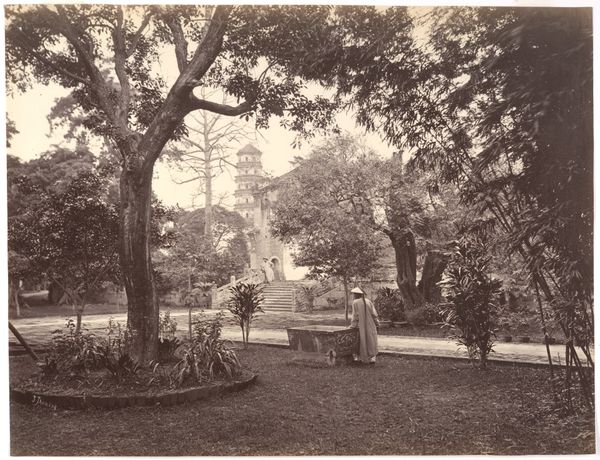
photography
#
still-life-photography
#
landscape
#
photography
Dimensions: height 123 mm, width 173 mm
Copyright: Rijks Museum: Open Domain
Curator: The Rijksmuseum holds a very tranquil photograph entitled "Huisje met een vijver", or "House with a Pond," made sometime between 1900 and 1910 by an anonymous photographer. Editor: It feels like a dreamscape, a memory clinging to mist. The house, a tiny beacon of domesticity, seems almost swallowed by the dense vegetation. There is a human in front of the house. There is something beautiful but deeply lonely about that little house, nestled so perfectly in nature. Curator: Yes, this photographic print offers a captivating glimpse into a colonial landscape, and likely depicts a structure used for labor and perhaps residence of indigenous workers. Consider the gaze involved in the staging of such a photo! The Western fascination with 'exotic' lands during this era. Editor: Right, and isn't it always about power? I am so curious who's behind the camera, the perspective they’re trying to shape. Colonialism and environmentalism seem so at odds when one considers the amount of damage done, especially through environmental destruction. Are those tropical plants meticulously arranged? And that stoic structure imposed within that organic backdrop... Curator: Definitely! The composition, in particular, struck me when thinking of intentional landscaping and ordered plantings, common signifiers in colonial photography aimed at conveying control over nature, but also ownership over people. I do agree the house is quite stoic with such stark edges. The contrast feels severe in a way. Editor: What gets me is how that ordered stoicism is challenged by the wildness pushing through. Nature has this wonderful, persistent way of reclaiming spaces. It's a constant negotiation, that tension between constructed control and nature asserting itself. Do you feel it, or is it me being overly optimistic? Curator: Optimistic or not, you bring a valid point of resistance. I read it also as an acknowledgment that while some systems were enacted to colonize, those with power could only do so much, even though often devastating and violent in their control. Editor: It's a landscape layered with narratives, isn't it? Glimpses of imposed order fighting for dominion over raw, resilient nature. Each element carries weight of history and the unyielding human spirit. Curator: Absolutely. Looking closer, it really encourages a kind of quiet reflection, pondering on what that landscape held, who was there, and how they shaped, or were shaped by, each other.
Comments
No comments
Be the first to comment and join the conversation on the ultimate creative platform.
